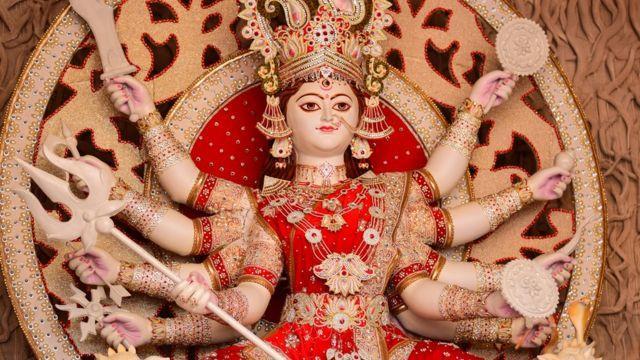4 Types of Navratri & Significances
Many believers do not know that Navratri falls four times a year during different seasons. Although each Navratri holds its own significance yet Chaitra Navaratri and Sharad Navaratri are the ones which are celebrated by people across the nation. This article delight introduces you about all 4 Types of Navratri & Significances, with their seasonal names.
Four Types of Navratri | Know about all the Navratris celebrated all year long
Shardiya Navratri | 4 Types of Navratri & Significances
Among all Navratri; Shardiya Navratri is the most popular and significant in India. Shardiya (Sharada) means autumn and forms a major part of crop harvesting time. Shardiya Navratri falls during the months of September-October. This Navratri is also known as Maha Navratri and Sharada Navratri. It celebrates the divine power of Durga who had slain the demon Mahishashura after a nine-day-long battle. Shardiya Navratri is also celebrated as mythology that Lord Ramachandra had killed Ravana during this period. Lord Ram had awakened Goddess Durga in the Tithi of Shasthi during the evening. Observed during the lunar month of Ashvin, it marks the beginning of winters (September-October). Southern India worships Goddess Laxmi and Goddess Saraswati also during this festival.
Chaitra Navratri
This Navratri is the second most famous Navratri whose name represents spring. It is observed during Chaitra month that is during March and April. It is the beginning of the Hindu Lunar calendar or Hindu New Year. Chaitra Navratri is known as Vasanta Navratri as it marks the seasonal shift from spring to summer. Most of the rituals and customs are the same as followed during the ‘Shardiya Navratri’. People fast on all nine days for both the Navratris and all days are considered extremely auspicious.
Magha Navratri
Magha Navratri falls in January or February during the winter season. Also known as, Gupta Navratri, its fifth day is observed as an independent event of significance and known as Basant Panchami or Vasant Panchami. Vasant is indication of spring wherein the followers of Goddess Saraswati honor her through music, art, writing, and kite flying in Hindu tradition.
Ashada Navratri
This Navratri falls in June or July while the beginning of the Monsoon season. Observed during the Shukla Paksha of Ashad month (June-July), it has great significance for Sadhaks (seekers) who practice Tantra Sadhana (practice). Sadhaks try to please the ten Mahavidyas or ten wisdom goddess associated with the Tantra practice. This Navratri is also known as Gayatri or Shakambhari Navratri.
Final Takeaway | 4 Types of Navratri & Significances
We are normally aware of only two types of Navratri that are Chaitra Navratri and Shardiya Navratri. But, as you know now 4 Types of Navratri & Significances, you must be amazed with falling Navratri four times throughout the year. When climate changes, the body is affected and it gets more prone to different kinds of bacteria. This leads to various mental & physical disorders as well as health problems. To prevent these unwanted situations ancestors had created the system of Navratri. It is believed that we should keep fast or go for minimal eating following the rituals of Navratri, four times a year. This keeps you extremely fit and attract productive energies towards you.
Read also : Understanding Yantra | Meaning, Types & Benefits ( https://thebrightdelights.com/understanding-yantra-meaning-types-benefits/ )
